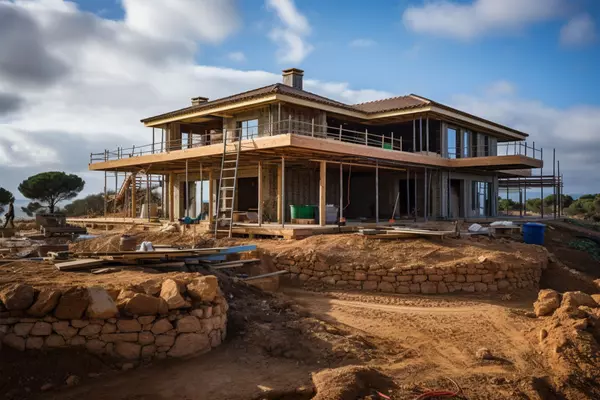Free Up Existing Inventory or Build More Homes: Which Path Should Washington Take?

If you’ve felt priced out of the housing market lately whether through higher rents, bidding wars, or stalled searches, you’re not imagining it. The U.S. is short an estimated 4 million homes, and affordability is near record lows. Even though more listings are appearing, sales remain sluggish, leaving families squeezed between high prices and limited options.
Washington is taking notice. Several very different housing proposals are now on the table, each with the potential to reshape the way Americans buy, sell, or rent a home.
Competing Visions in Congress
Earlier this year, Senators Elizabeth Warren (D-MA) and Tim Scott (R-SC) introduced the ROAD to Housing Act of 2025—a bipartisan blueprint designed to tackle affordability by boosting supply, modernizing financing, and improving oversight. It builds on Warren’s long-standing efforts, including her American Housing and Economic Mobility Act, first introduced back in 2018.
Meanwhile, Rep. Marjorie Taylor Greene (R-GA) is pushing a very different plan: the No Tax on Home Sales Act, which would eliminate capital gains taxes on the sale of primary residences—a move former President Donald Trump has publicly considered.
For everyday buyers, sellers, and renters, the real question is: Which approach will actually make housing more accessible?
The ROAD to Housing Act: A Big, Multi-Layered Push
At its heart, the ROAD Act focuses on three goals: expanding supply, opening access, and strengthening accountability.
-
Expanding supply: The bill would encourage local governments to cut zoning red tape and speed up environmental reviews, especially for smaller projects like townhomes or infill developments. It also launches a new Innovation Fund that communities could use for infrastructure, housing, or schools.
-
Opening access: Beyond building, the plan aims to make financing easier. It supports modular and manufactured housing, expands availability of small-dollar mortgages, and strengthens protections for veterans using VA loans. Rural communities would also benefit from streamlined USDA housing programs.
-
Accountability & oversight: The package layers in reforms that require transparency and reduce duplicative paperwork, aiming to stretch federal housing support beyond major metro areas.
While it’s no silver bullet, experts view the bipartisan support as a breakthrough. As Moody’s economist Mark Zandi noted, “It’s no game-changer, but policymakers are finally in the game.”
How It Builds on Warren’s Earlier Plan
The ROAD Act also borrows heavily from Warren’s American Housing and Economic Mobility Act, reintroduced earlier this year. That proposal was even more ambitious:
-
Estimated to build or rehab 3 million homes over the next decade, lowering rents by about 10% (roughly $140 in monthly savings for the average family).
-
Paid for by rolling back estate tax thresholds and closing loopholes for the wealthiest households.
-
Offered down payment assistance for first-time and first-generation buyers, broader VA loan eligibility, and grants to close appraisal gaps.
Sen. Raphael Warnock (D-GA), a co-sponsor, highlighted the broader mission: “Housing means dignity, safety, and security… strengthening affordability is critical to helping families build a solid future.”
The Simpler Pitch: No Tax on Home Sales Act
While the ROAD Act spans more than 300 pages of programs and reforms, Greene’s No Tax on Home Sales Act has a straightforward goal: eliminate capital gains taxes on primary residences.
The logic: many long-time homeowners especially retirees, stay put because selling could mean a hefty tax bill. Nearly 1 in 3 owners now exceed the existing exclusion, with average liabilities topping $41,000. Removing that penalty could encourage empty nesters to sell, freeing up homes for younger buyers.
Advocates like the National Association of REALTORS® argue the tax was never meant to punish homeowners. Critics, however, note that while the change could free up inventory, it doesn’t actually make homes more affordable for first-time buyers already struggling to break in.
The Bigger Picture: Why Both Matter
New construction is helping at the edges, but not fast enough. In July, only 621,000 single-family homes were under construction nationwide—down 4% from last year. Builder confidence is also slipping, and while new homes are becoming relatively more affordable (especially in the South), supply remains concentrated in a few regions.
Realtor.com’s state-by-state report card paints the divide clearly:
-
South & Midwest → Top marks thanks to lower costs and more flexible zoning.
-
West & Northeast → Failing grades, held back by restrictive land use rules and high development costs.
In places like Massachusetts, where over half of the land is zoned exclusively for single-family housing, construction bottlenecks are deeply entrenched.
Bottom Line
The U.S. housing shortage is too large for the market to fix on its own. Rents remain high, homelessness is climbing, and many families still feel locked out of ownership.
That’s why Congress is weighing bold but very different approaches:
-
Build more and modernize financing (ROAD Act).
-
Free up existing supply by eliminating tax barriers (No Tax on Home Sales Act).
Both plans target pieces of the problem—but whether Washington prioritizes one, the other, or a blend of both, the stakes for buyers, sellers, and renters couldn’t be higher.
Categories
Recent Posts









GET MORE INFORMATION

Licensed Real Estate Consultant | License ID: S.202562

